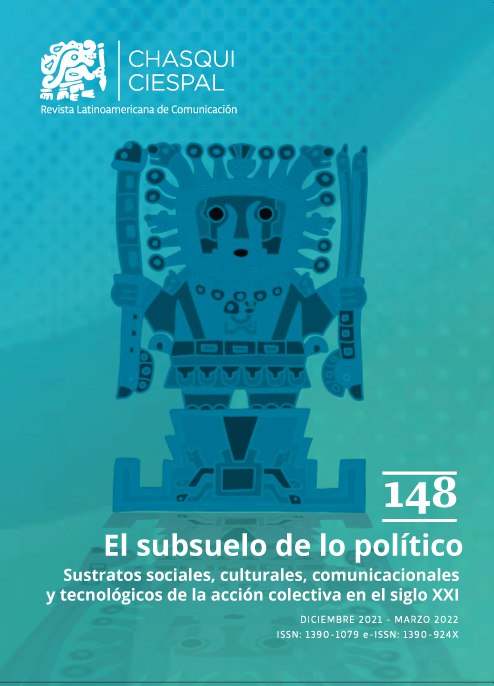La tendencia del anti branding en la comunicación estacionaria de marcas. El caso de Día de Muertos en México
DOI:
https://doi.org/10.16921/chasqui.v1i148.4616Keywords:
branding, dia de muertos, marketing, posicionamientoAbstract
¿Esta surgiendo un nuevo modelo para la comunicación de marca que le escapa a las máximas del modelo de posicionamiento definidas en las diversas fuentes de conceptualizaciones de modelos teóricos que podemos definir como el branding 2.0?Hay indicios en diversas comunicaciones de marcas, de diversas categorías de una forma de comunicar que de manera premeditada para su comunicación “estacionaria” para día de muertos opta por contradecir las máximas del modelo del canon, branding 2.0, y se aleja de su arquitectura de marcas, esto es de enunciar a partir de los valores, la personalidad, el propósito de su marca, o de dar beneficios basados en atributos, o de ofrecer servicios buscando ser relevantes en la vida de las personas. Pareciera que lo que prima es proponer conversación y contenido de cualquier tipo.¿Construirá esto un nuevo modelo, una vía que valida la posibilidad del vaciamiento de significados de lo que tendría para decir o quisiera construir de imaginario en la enunciación de una marca? ¿Será esto una evolución del branding 2.0, un retroceso, o una tangente alternativa?References
Aaker, David A., (2010), Brand Relevance: Making Competitors Irrelevant, EE. UU: Jossey-Bass.
Aaker, Jennifer L., (1997), Dimensions of Brand Personality, EE. UU: Journal of Marketing Research.
Butterfield, Leslie, ed. (1997), Excellence in Advertising, The IPA guide to best practice, Butterworth Heinemann a division of Reed Educational and Professional Publishing Ltd.
Dru Jean- Marie, (2002), Beyond Disruption, Changing the rules in the marketplace, And Adweek Book and John Wiley & Sons, Inc.
Lane Keller, Kevin, (1999), Brand Mantras: Rationale, Criteria and Examples, EE. UU: Journal of Marketing Management.
Mc Cracken, Grant,(2005), Culture and Consumption II, Indiana University Press.
Michaels, F.S. (2011), Monoculture, How One Story is Changing Everything, Red Clover Press.
Neumeier, Marty, (2005), The Brand Gap: How to Bridge the Distance Between Business Strategy and Design, EE. UU, New Riders.
Otaduy Javier, (2012), Genoma de Marca, Lid.
Rapaille, Clotaire, (2006), The Culture Code, An ingenious way to understand why people around the world live and buy as they do, Broadways Books.
Steel Jon, (2000), Truth, Lies & Advertising, The art of Account Planning, Adweek Book -Eresma & Celeste Ediciones.
Wertime, Kent, (2002), Building Brands & Believers. How to connect with consumers using Archetype. Asia: John Wiley & Sons.
Pham, Michel Tuan, Maggie Geuens, and Patrick De Pelsmacker (2013), “The Influence of Ad-Evoked Feelings on Brand Evaluations: Empirical Generalizations from Consumer Responses to More than 1000 TV Commercials,” International Journal of Research in Marketing, 30 (4), 383–94. Preece, Chloe
Puzakova, Marina and Pankaj Aggarwal (2018), “Brands as Rivals: Consumer Pursuit of Distinctiveness and the Role of Brand Anthropomorphism,” Journal of Consumer Research, 45 (4), 869–88.
Reimann, Martin, Sandra Nuñez, and Raquel Castaño (2017), “Brand-Aid,” Journal of Consumer Research, 44 (3), 673–91.
Torelli, Carlos J., Rohini Ahluwalia, Shirley Y. Y. Cheng, Nicholas J. Olson, and Jennifer L. Stoner (2017), “Redefining Home: How Cultural Distinctiveness Affects the Malleability of In-Group Boundaries and Brand Preferences,” Journal of Consumer Research, 44 (1), 44–61.
Villarroel Ordenes, Francisco, Dhruv Grewal, Stephan Ludwig, Ko De Ruyter, Dominik Mahr, and Martin Wetzels (2019), “Cutting through Content Clutter: How Speech and Image Acts Drive Consumer Sharing of Social Media Brand Messages,” Journal of Consumer Research, 45 (5), 988–1012
Downloads
Published
Issue
Section
License
- Authors retain copyright and grant the journal right of first publication with the work simultaneously licensed under a Creative Commons Attribution-NoDerivs License (CC BY-ND) that allows others to share the work with an acknowledgement of the work's authorship and initial publication in this journal.
- Authors are able to enter into separate, additional contractual arrangements for the non-exclusive distribution of the journal's published version of the work (e.g., post it to an institutional repository or publish it in a book), with an acknowledgement of its initial publication in this journal.
- Authors are permitted and encouraged to post their work online.

